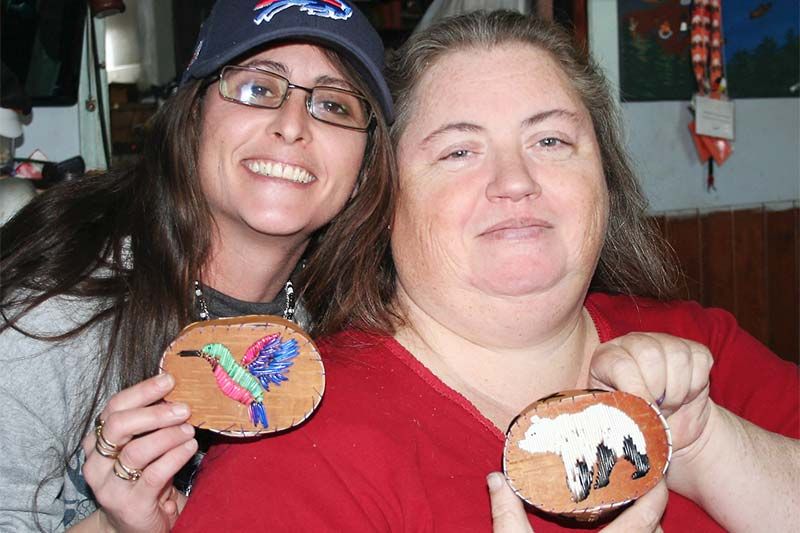Craig Bakay | Feb 03, 2017
With her drum-making, songs, language projects and various other pursuits, Danka Brewer has been on a quest of sorts to preserve and pass on as much First Nations culture and lore as she can.
One thing she’s been trying to learn has been the traditional practice of quilling — taking porcupine quills and adding them to birch bark and/or other materials to form designs such as flowers, animals, birds, etc.
She hadn’t been having much success in finding someone with the traditional knowledge to teach her because there simply aren’t that many people around who know how it’s done.
“It’s a dying art,” Brewer says. “At one time, porcupines were a part of the Anishinabe diet and true to their culture, every part of the animal was treated as an available resource and was used for something.
“But it’s not much of a food source any more.”
As well, there’s a lot of preparation time involved in the art — harvesting, dyeing and such — and the actual crafting part is quite intricate and time-consuming. So, not a lot of people have the time or inclination to pursue it.
However, there is a lady, one Kim Muskrat of the Hiawatha First Nation near Rice Lake, who had been taught by an elder in Curve Lake. Muskrat has considerable history with the art as her great grandmother Pauly Soper and her sister, Margaret Anderson, were skilled in quilling. In fact, such was their skill that in 1860, a basket and briefcase made by them was presented to Prince Edward, who later became King Edward VII, and to this day the pieces are part of the Royal Collection.
Muskrat holds occasional workshops but Brewer’s schedule had never meshed with Muskrat’s until last weekend.
So, Brewer along with compatriot Tanya Strickland headed off to make the 166 kilometre (each way) trip to the Hiawatha Band Office for lessons.
They came home enamoured with their new skills and traditions.
“This will make my rotation,” said Strickland. “It’s the first craft in 10 years with Mother (Brewer) I’ve been able to do.
“I enjoyed it with ease.”
On this day, Brewer and Strickland made birch bark medicine boxes, punching small holes into the bark and inserting the quills to form images. There’s no gluing or anything like that involved, the quills make their own attachments and are folded over on the inside with tweezers. A second layer of birch bark is added on the inside to hide the quills.
It’s painstaking work, but something Brewer has always wanted to do.
“It’s the traditional knowledge,” Brewer said. “I already know how to make birch bark baskets and this (decorating them with quill work) is the next evolution.
“I can now pass this knowledge down.”
Brewer teaches a lot of classes, both in connection with school boards and other organizations and she plans on incorporating quill work in these.
But she also does traditional crafts just for the sheer love of it.
Although quill art can fetch prices of $50-500 depending on the piece (jewelry, wall hangings, feather boxes, etc), the amount of quills and the time it took to put together (antique pieces have been valued at $1,500)
But that’s not why Brewer does it.
“You never get back the time spent harvesting, dyeing and work,” she said. “I do crafts because I enjoy it and to pass it on to next generations.
“To keep the knowledge and traditions alive so we don’t lose them.”
More Stories
- No Winner Yet in Catch The Ace But Fundraising Target Met
- South Frontenac Food Bank Opens Second Location in Battersea
- Sharbot Lake Pentecostal Church Anniversary - 1925-2025
- Frontenac Holistic Health Fair - September 20 At Storrington Centre
- Odd Year For Real Estate - But Sales Are Steady Year Over Year
- 193rd Kingston Fall Fair
- Kim Phuc - the Napalm Girl - To Visit Flinton In November
- South Frontenac Council - September 2
- Sticker Shock - EV Charging Station To Cost North Frontenac Township
- 30th Anniversary Verona Car Show

